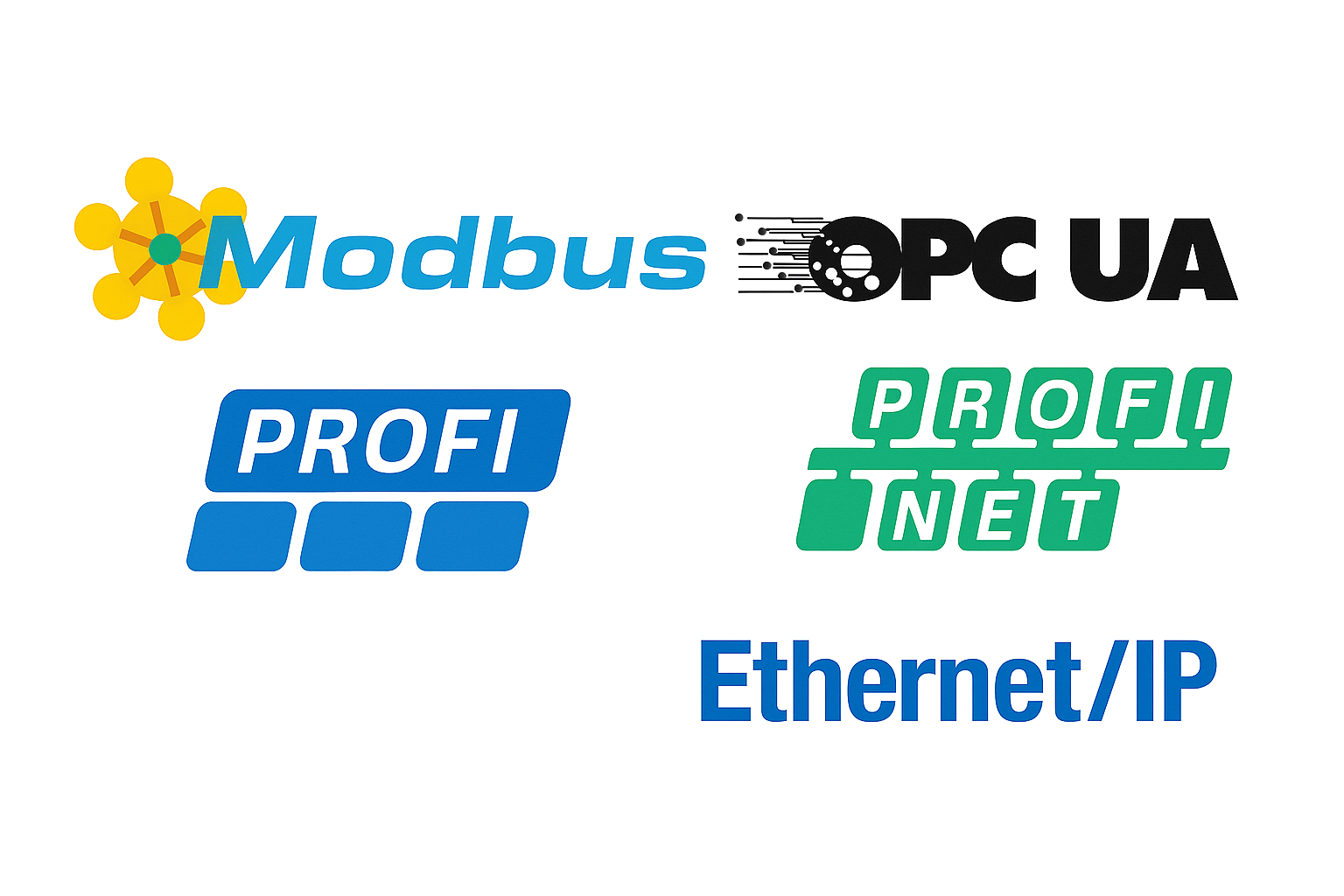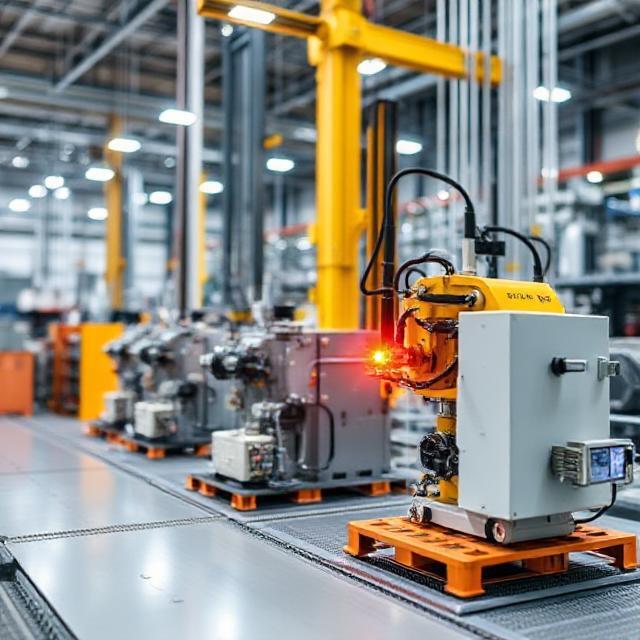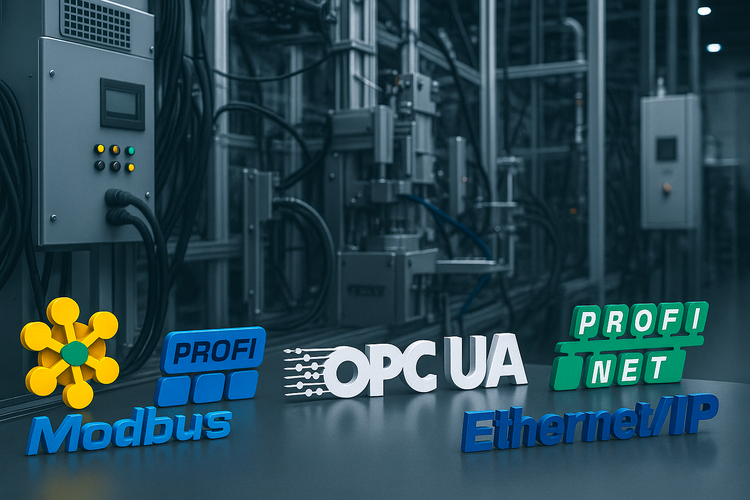Smart manufacturing relies deeply on seamless communication between devices, sensors, machines, and software platforms. This is where industrial communication protocols play a vital role. They allow machines to talk to each other and share real-time data, enabling automation, efficiency, and intelligence in production systems.
In this blog, we’ll explore the most popular industrial protocols, their key benefits, applications, and why they are essential for the future of smart manufacturing.
What Are Industrial Protocols?

Industrial protocols are sets of rules used to communicate data between automation devices. These include PLCs (Programmable Logic Controllers), HMIs (Human Machine Interfaces), sensors, and actuators. Each protocol ensures that data is transferred reliably, securely, and in a format that all devices can understand.
Key Industrial Protocols in Smart Manufacturing

Let’s look at the most commonly used protocols that power smart factories today:
1. Modbus
Modbus is one of the oldest and most widely used industrial communication protocols. It is simple, open, and ideal for connecting a range of devices in factory environments.
Key Features:
- Open and easy to implement
- Used for connecting PLCs, sensors, and actuators
- Supports serial (RS-232, RS-485) and Ethernet (Modbus TCP)
Common Uses:
- Energy monitoring
- SCADA systems
- Building automation
2. PROFIBUS
PROFIBUS (Process Field Bus) is used in both discrete and process automation. It provides fast communication for sensors and actuators with a controller.
Key Features:
- Real-time data exchange
- High-speed serial communication
- Strong diagnostic support
Common Uses:
- Process automation
- Robotics
- Manufacturing lines
3. PROFINET
PROFINET is an Ethernet-based protocol developed as an upgrade to PROFIBUS. It enables high-speed data transfer and real-time control, perfect for Industry 4.0 systems.
Key Features:
- Real-time communication
- High scalability
- Supports motion control
Common Uses:
- Smart sensors
- Robotic cells
- Automated conveyor systems
4. EtherNet/IP
EtherNet/IP (Ethernet Industrial Protocol) is a powerful industrial Ethernet protocol based on TCP/IP. It is widely used in North America and integrates well with IT systems.
Key Features:
- Standard Ethernet technology
- Real-time control and information
- Supports safety protocols
Common Uses:
- Factory automation
- Robotics
- Data acquisition
5. OPC UA (Open Platform Communications Unified Architecture)
OPC UA is a platform-independent, service-oriented architecture. It provides secure and reliable communication between devices and enterprise-level systems.
Key Features:
- Vendor-neutral
- High security
- Supports cloud connectivity
Common Uses:
- SCADA systems
- IIoT (Industrial Internet of Things)
- Predictive maintenance
Industrial Protocols Comparison Table
Below is a simple comparison of the top industrial protocols used in smart manufacturing:
| Protocol | Communication Type | Speed | Real-Time Support | Common Use Case |
|---|---|---|---|---|
| Modbus | Serial/Ethernet | Low | No | Energy monitoring, simple automation |
| PROFIBUS | Serial | Medium | Yes | Process and factory automation |
| PROFINET | Ethernet | High | Yes | High-speed automation, robotics |
| EtherNet/IP | Ethernet | High | Yes | Industrial control, robotics |
| OPC UA | Ethernet/Web | Variable | Yes | IIoT, SCADA, cloud integration |
Why Industrial Protocols Matter in Smart Manufacturing

Industrial protocols are the backbone of smart factories. Here's how they contribute:
1. Real-Time Decision Making
With protocols like PROFINET and EtherNet/IP, data from machines can be instantly analyzed and acted upon, minimizing downtime and boosting productivity.
2. Interoperability
Protocols like OPC UA allow devices from different manufacturers to communicate, supporting an open and flexible ecosystem.
3. Remote Monitoring
Many protocols support cloud-based applications, allowing managers to monitor and control systems from anywhere in the world.
4. Enhanced Safety
Some protocols include features for functional safety, which ensures that automated systems shut down or act accordingly during failures.
Integrating Protocols with IIoT and Cloud
With the rise of Industrial IoT, protocols are evolving to support cloud integration. OPC UA stands out with its ability to work with cloud platforms like Azure, AWS, and Google Cloud. It helps in pushing data securely from shop floors to the cloud for:
- Machine learning
- Data analytics
- Dashboard monitoring
- AI-based control
Security in Industrial Protocols
Security is a major concern in smart factories. Protocols like OPC UA have built-in encryption, authentication, and access control. Others like EtherNet/IP can be enhanced with firewalls, VLANs, and secure remote access systems.
Always ensure:
- Encrypted communication
- Role-based access control
- Regular firmware and protocol updates
Benefits of Using the Right Protocol
Choosing the right communication protocol helps manufacturers:
- Reduce machine downtime
- Improve productivity
- Gain real-time visibility
- Enable predictive maintenance
- Future-proof their systems
Future of Industrial Communication Protocols
With the growth of 5G, edge computing, and AI, the future of industrial protocols is even brighter. New protocols and updates are being designed to support:
- High-speed wireless communication
- Real-time cloud edge integration
- AI-driven automation
- Increased data security and integrity
Industrial protocols are not just technical standards—they are the digital language of smart manufacturing. They enable efficient, fast, and secure communication across machines, systems, and enterprise platforms. By understanding and choosing the right protocol, manufacturers can reveal the full potential of Industry 4.0 and pave the way for intelligent, connected, and automated factories.

